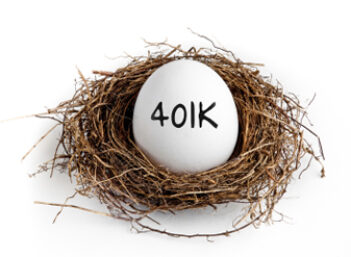For many Americans, retirement and mutual funds go together perfectly. Like peanut butter and jelly. Like football and Sunday.
Like retirement and panic.
OK, panic may be too strong a word, but perhaps not...
1. A record $77.4 billion poured into U.S.-listed equity mutual funds and ETFs in January 2013, according to TrimTabs Investment Research. (http://www.advisorone.com/2013/02/05/january-fund-flows-show-exuberant-i...) More than $40 billion flowed into bond funds.
2. There were $23.8 trillion dollars worldwide invested in mutual funds at the end of 2011, according to the Investment Company Institute's 2012 factbook. That's basically equal to the combined 2011 gross domestic products for the United States and China ($23.9 trillion, according to the CIA World Factbook.)
3. In 1980, just 5.7% of U.S. households owned mutual funds. At the end of 2011, that number was 44.1%, according to the ICI Factbook.
4. The percentage of Americans participating in target-date mutual funds rocketed by 19% in 2006 to 36% at the end of 2010, according to the ICI Factbook.
5. There were 1,134 ETFs at the end of 2011, according to the ICI Factbook. That's an 11-fold increase since 2001 when there were 102.
6. At the end of 2011, the median mutual fund assets held by a household that owns mutual funds was $120,000, according to the ICI Factbook.
7. At the end of 2011, the median number of mutual funds owned by households that own mutual funds was four, according to the ICI Factbook.
8. American families held 21.5% of their assets in stocks in 2010, according to the Federal Reserve's Survey Of Consumer Finances. By 2010, that number had fallen to 14%.
9. That same survey said that 38.1% of American families' assets in 2010 were held in retirement accounts. That's up from 29% in 2001.
10. More than half (58.1%) of white, non-Hispanic American families had retirement accounts in 2010, according to the Fed's survey. Only 34.4% of nonwhite or Hispanic American families did.
11. Just 7.9% of nonwhite or Hispanic American families owned stock in 2010, the Fed's Survey of Consumer Finances said. That's less than half the percentage (18.6%) of white, non-Hispanic American families who owned stock.
12. Only 45.9% of those living in the American South held retirement accounts in 2010, according to the Fed's consumer finance survey. Every other region of the U.S. topped 50%, with the Midwest leading the way at 54.6%.
13. Roughly half (47%) of Americans expect to get a tax refund in 2013, according to a survey from TD Ameritrade. Only 15% of those anticipating a refund say they will invest what they get back from Uncle Sam. That's the same percentage that plan to spend it on discretionary items. (http://www.marketwatch.com/story/td-ameritrade-survey-americans-plan-to-...)
14. Males are much more likely than women (58% to 41%) to say they manage their own retirement portfolio, according to a survey from online investment advisor Jemstep.com. In all, half of U.S. adults with a retirement portfolio said they manage it on their own. (https://www.jemstep.com/marketing/retirement-planning-survey-december-2012)
15. The Great Recession still has people reeling years later. In 2008, 36% of mutual fund-owning households were willing to take 'above-average or substantial' investment risk, according to the Investment Company Institute. In 2012, that number had fallen to just 28%. (http://www.ici.org/pressroom/news/12_news_ownerment_characteristics)
16. Despite the Great Recession, Baby Boomers increased their median household savings in retirement accounts from $75,000 to $99,000 from 2007 to 2012, according to the Transamerica Center For Retirement Studies. Generation Xers' savings grew from $32,000 to $42,000.



